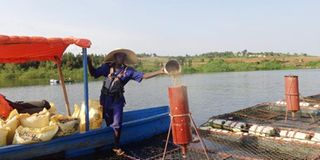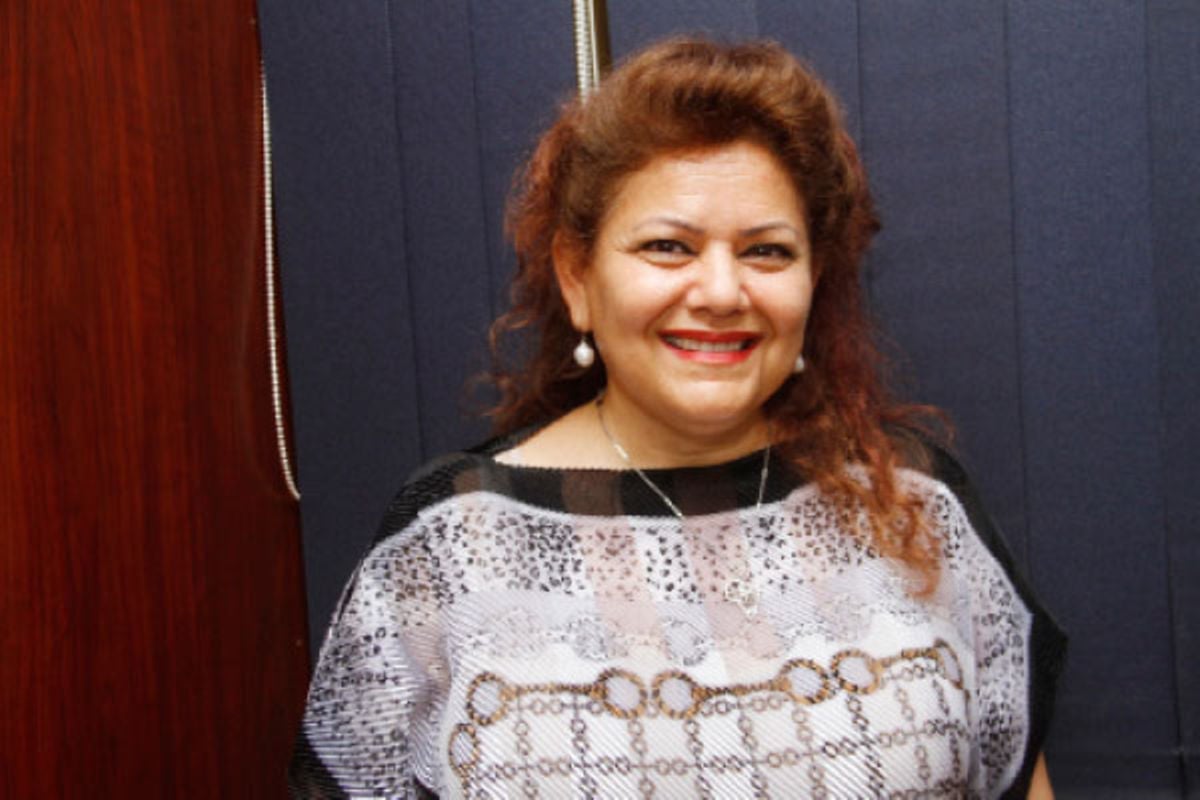Responsible cage culture is crucial for sustainable fishing

A worker feeds the fish that are reared in cages on the lake. Cage fishing is increasingly becoming popular in Uganda. FILE PHOTO
It is well known that aquaculture is the fastest growing food production sector in the world.
With Uganda’s current population estimated at 37.5 million, results into per capita fish consumption stand at 8.0 Kgs. This is way below the World Health Organisation (WHO)’s recommended per capita consumption of 25 Kgs.
Cage farming is recommended as one of the alternatives to increase fish production within the available water bodies. On the environment, cage culture can have positive effects by reducing the pressure on overexploited fish stocks. However, there are potential costs.
For example, potential hazards of cage culture include benthic enrichment, eutrophication of the water column, escapees and effects on biodiversity and sensitive habitats.
Aquaculture expansion in Uganda has been accompanied by a gradual shift from earthen ponds with low output to cage culture systems. The government is also pursuing the possibility of establishing ‘Aquaculture Parks’.
Drafted policy
In January 2012, a policy for the establishment and operation of aquaculture parks was drafted which came as a result of the desire for the investment in commercial scale aquaculture. However, there is no specific legislation which regulates the environmental impact both on and of aquaculture production systems including cages.
Cages usually are made of a rigid frame covered with a mesh material through which water can readily flow but fish cannot escape. When such materials are abandoned in lakes or rivers, there are chances of affecting the breeding grounds of fish and navigation. The cage construction process should be preceded by a careful examination of all the materials to verify their conformity with the required technical features.
Cage culture can be established in any suitable body of water, including lakes, ponds, mining pits, streams or rivers with good water quality.
This flexibility makes it possible to exploit underutilised water resources to produce fish. Relative to the cost of pond construction and its associated infrastructure, cage culture in an existing body of water can be inexpensive.
According to FAO report of 2007, cage culture operations in Uganda began early 2006, and are being encouraged by the government as a development priority.
With the increasing interest of investors to pursue cage culture in water bodies of Lake Victoria, Albert and Kyoga, it is of paramount importance that all the proposed areas thought to have potential for cage are surveyed to access their suitability. Since cage farming must cope with the vagaries of environmental conditions, there is need to minimize the risks associated with the farming structures, species cultured, as well as those to the environment.
This is not done in many cases when individuals set up cages in water bodies of Uganda apart from few who are able to get services from professionals or research intuitions. With such a trend, sustainable development and sustainable use may not be achieved in the long run. While some of the detrimental effects of cage operations are reduced through capacity building and scientific advances, many are intrinsic to the industry itself. For this reason, cage culture operations must be subjected to regulations or voluntary codes of conduct.
It has been reported that some private investors faced a lot of resistance from the local population when establishing cages in Masaka district on Lake Victoria.
Therefore, public concern about the visual and environmental impact of cage culture and the competition which it is perceived to create for fishermen need to be addressed before such investments are established.
Best management practices for cage culture covering aspects of ecological effects, water quality, escapees, fish health and siting need to be established. Improvement in the dissemination of research results to farmers, in a usable form, is important. Existing sources of information on responsible cage culture also need better publicity.
The author is a research officer, Abi ZARDI/NARO, in Arua.




